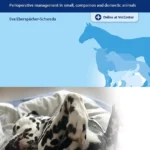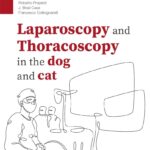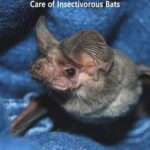Parasitology in Veterinary Medicine
 by Peter Deplazes, Johannes Eckert, Alexander Mathis, Georg Von Samson-Himmelstjerna, Horst Zahner
by Peter Deplazes, Johannes Eckert, Alexander Mathis, Georg Von Samson-Himmelstjerna, Horst Zahner
June 2016
Parasitology in Veterinary Medicine pdf
The classical textbook Parasitology in Veterinary Medicine, now available in an updated English version, is not only ideal for exam preparation but is also of relevance in veterinary practice.
The book allows easy and structured learning by providing a clear outline of the subject matter and practical chapter summaries. All relevant protozoa, helminths and arthropods that cause parasitic diseases or act as vectors of pathogens are presented. Overviews of treatment and control measures are given per animal species and enables rapid contextual orientation. Zoonotic and food-borne parasites are also discussed. Memorable life cycles of parasites and excellent colour photographs of the clinical symptoms and pathological changes illustrate the contents. Diagnostic panels allow for rapid differentiation of the developmental stages under the microscope. In the glossary numerous technical terms are defined and explained etymologically.
The textbook ‘Parasitology in Veterinary Medicine’ is based on ‘Lehrbuch der Parasitologie für die Tiermedizin’ (3rd ed.), published in 2013 by Enke, Germany. Wageningen Academic Publishers presents a revised edition in English, suited both for basic and advanced studies and as reference book for the veterinary practice. Although focused on the European situation, the book also deals with important parasitic diseases occurring in other regions.The main part is organized by parasite groups (protozoa, helminths, arthropoda, etc.). It provides information on the parasites’ biology, epidemiology, immunology, pathogenesis, clinical signs, diagnosis, therapy and control. Summaries allow for a quick overview.Another part is arranged according to animal species (cattle, sheep and goats, pigs, horses, dogs and cats, rabbits, poultry, bees). It contains tables listing the parasites of the organ systems and showing antiparasitic drugs. Furthermore, practical instructions on the control of parasitic diseases are given.Further chapters deal with general parasitology, zoonoses, parasites in food, diagnostic procedures, and essentials of therapy and control of parasitoses. A detailed glossary with etymological notes is intended for a better understanding of parasitological terms. The book contains numerous tables and is illustrated with 421 figures, including many instructive drawings of parasite life cycles.
PDF 127 MB fn




